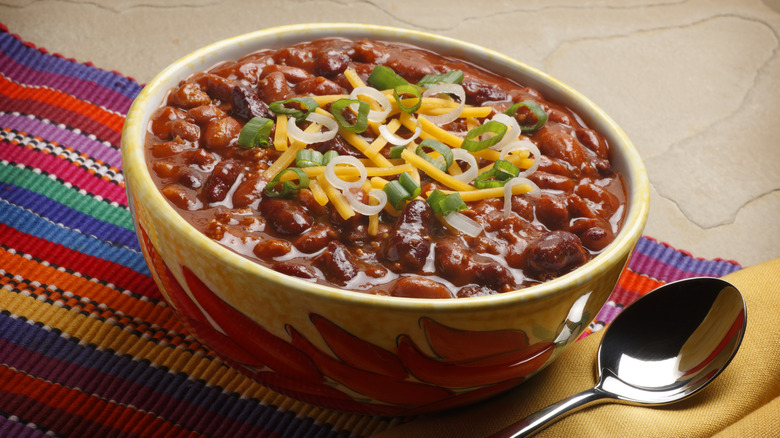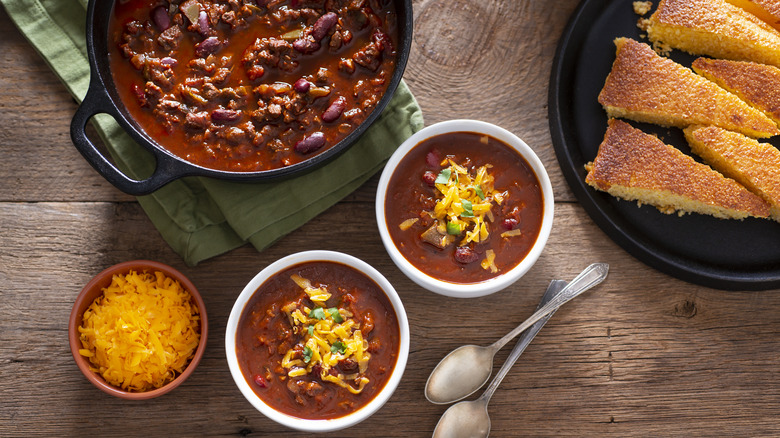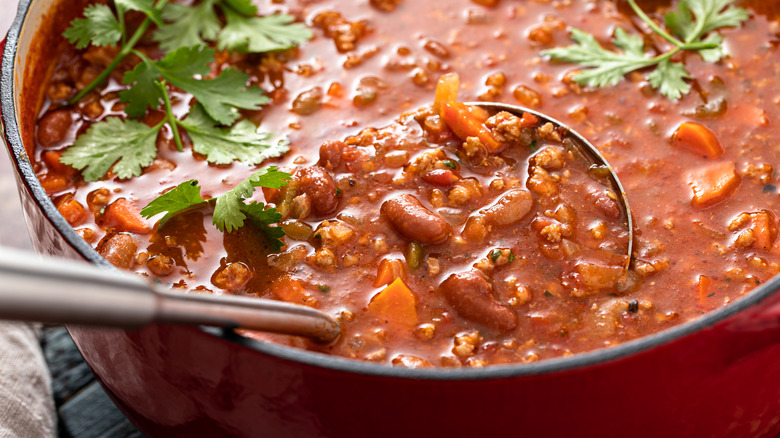Why Larger Beans Are The MVP For Chili
Chili's adaptability and bold profile have secured its place as a beloved classic in the world of comfort food. Whether you enjoy it over a bed of rice or corn chips, on hot dogs, or on its own with a dollop of sour cream and a sprinkle of cheese, this savory stew is perfect for cozy nights in and festive tailgate parties alike. The heartiness of slow-cooker spicy chili makes it a great choice for a hungry stomach as does its versatility. While chili is traditionally made with ground beef, that can be replaced with chicken, turkey, or vegetarian options, helping chili fit into any diet.
Some regional styles of chili, namely Texas style, omit the inclusion of beans in the recipe. For most other variations, though, legumes are a crucial part of bringing the dish together. As one of the main vehicles for delivering the countless flavors and ingredients of chili, the structural integrity of your beans is of the utmost importance. That's why the next time you make a pot of chili, you should skip the small beans and opt for larger ones instead.
Big beans bring texture
As delicious as the flavors of chili are, the texture can quickly turn mushy without the right ingredients. The tomatoes, ground meat, and various minced veggies all add to the stew's great taste but are not necessarily the most texturally interesting. Small beans can only add to the problem of mushiness as they are not big enough to make a substantial impact on the overall texture. That's where big beans come in. Large beans have enough mass to not get literally lost in the sauce and can provide some essential chew to an otherwise soft dish.
Additionally, the bigger the bean, the less likely it is to be squished while it is continuously stirred, served, and scooped. Smaller beans need less time to be completely cooked through so it is very easy to overcook them. That especially applies if you keep the pot of chili on the stove. Overcooking results in beans becoming overly soft, which makes them less appealing amongst chili's other ingredients. With big beans, there is a lower chance of them being cooked to a paste since they are large enough to withstand longer cooking times.
The best beans for chili
When stocking up on beans to toss into chili, there are a few types you should be sure to add to your grocery list. You can always make chili using just one kind of bean if that's your preference but using a variety of beans can add some great textural and flavor variety. A great bean combo to start out with is a medley of kidney, black, and pinto beans. Kidney beans have a mild taste and a very firm texture, making them great vessels for the flavors of chili. Black and pinto beans have a similar earthy taste and also hold up well when cooked. However, you should try to avoid using only pinto beans as they are a bit softer than black and kidney beans.
Swapping out your tiny beans for big ones is just one of many tips to elevate chili you can employ. Chili can take some time to make and a lot of effort goes into finding the perfect combination of spices to bring it to life. Use big beans with your chili and give its intricate flavor a texture to match.


